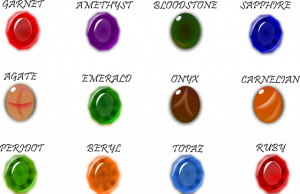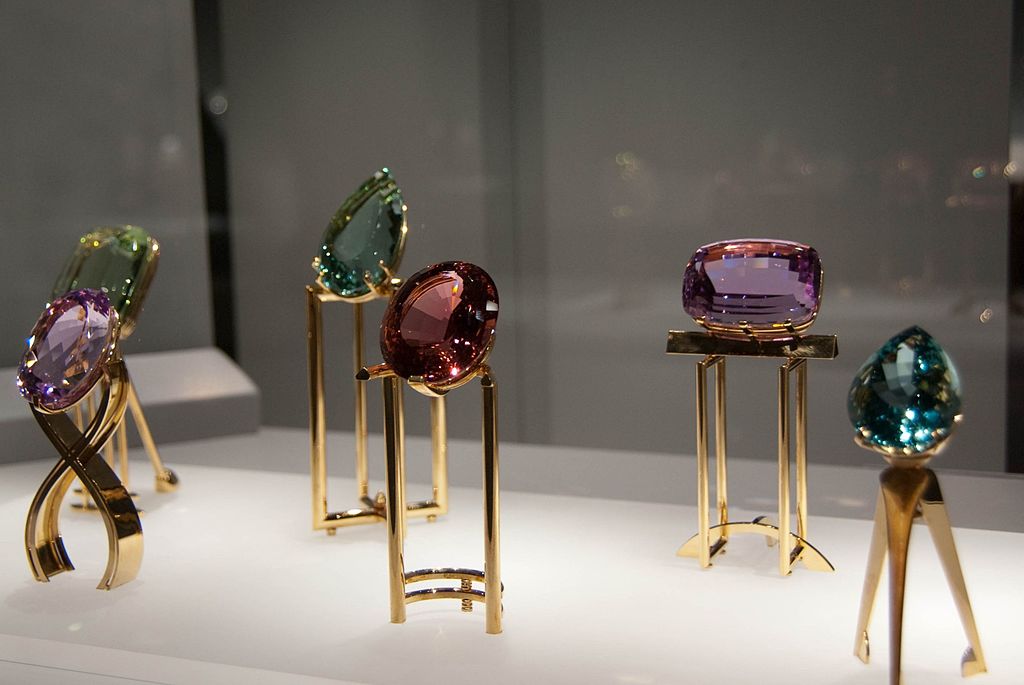MH writes: “I'm wondering if you would know if there is any new age connection to birthstones? I'm from Ireland and wanted to get my niece a ring for her eighteenth birthday and she wants a birthstone ring. I'm not certain if there is any new age association. I would really appreciate it if you could answer this question.”
You’ll be happy to know that birthstones originate in the bible. They are not New Age; however, they can be used in superstitious and New Age ways so be careful how you use them.
Birthstones are said to have originated with the Breastplate of Aaron in the Book of Exodus. This breastplate contained 12 stones that represented the 12 tribes of Israel. According to the Hebrew Bible, the first row contained carnelian, chrysolite, and emerald; the second row contained turquoise, sapphire, and amethyst; the third row contained jacinth, agate, and crystal; the fourth row contained beryl, lapis lazuli, and jasper.
The International Gem Society (IGS) believes that it was not until the first century that the historian Josephus connected the 12 stones on Aaron’s breastplate with the 12 months of the year, and the 12 zodiac signs. St. Jerome is said to have encouraged the use of these stones by Christians in the 5th century. At the time, people would collect all 12 stones and wear them at the same time in decorative belts, bracelets and ornaments. By the early Middle Ages, people began to associate the gems with the 12 apostles. In those days, people would own a collection of the stones, but only wear the stone associated with a particular month. Eastern traditions took it a step further and associated a particular power with the stone only when worn during the assigned month. It wasn’t until the 16th century that people began to wear one stone representing their birth month, which was the start of the birthstone tradition we recognize today.
Over the centuries, certain cultures have associated birth stones with mystical powers, such as in Hindu traditions. As the IGS explains, “The Ratna Pariksha, a 5th-century Hindu text, chronicles the relationships between gemstones and deities, celestial bodies, and days of the week. Hindu practices associate nine gemstones with the different celestial forces, called navaratna in Sanskrit. Jewelry in this style always centers bright red ruby or spinel, surrounding it with the rest of the gems on either side. These pieces are believed to grant the wearer a cosmic harmony, as well as stand as a symbol of status and wealth. Certain individual stones are then recommended by Vedic astrologers based on astrological birth charts to harness the power of certain planets or ward off the harm of others.”
Others embrace the New Age belief that stones have healing powers. For example, amethyst is believed to block negative energy, as well as help people understand their dreams, enhance the immune system and purify the blood. Agate is said to harmonize yin and yang, cleanse the aura, and help the wearer to concentrate. Lapis Lazuli allegedly opens the third eye, boosts illumination, aids in the development of psychic powers, and stimulates personal and spiritual powers.
 There are also many superstitions associated with birthstones. Some believe a birthstone bracelet worn on the right wrist brings self-confidence. It promotes openness when worn on the left wrist. Aquamarine is said to ensure safe passage across stormy seas, the ruby guarantees love, and the emerald brings good luck. The peridot protects the wearer from the terrors of the night and the opal is lucky but only if worn during the month of October.
There are also many superstitions associated with birthstones. Some believe a birthstone bracelet worn on the right wrist brings self-confidence. It promotes openness when worn on the left wrist. Aquamarine is said to ensure safe passage across stormy seas, the ruby guarantees love, and the emerald brings good luck. The peridot protects the wearer from the terrors of the night and the opal is lucky but only if worn during the month of October.
Obviously, Christians should not wear an amethyst necklace because they believe it will boost their immunity, or sport an emerald to bring good luck, but should only do so as a symbol of their birth month.
It’s interesting to note that there are three separate lists of birthstones for each month – Ancient, Traditional, and Modern. The Ancient list has been around for thousands of years. The Traditional list dates back about 500 years. The modern list contains the stones that have been associated with birth months for the last 100 years.
Ancient Birthstones
January – Red Garnet, Ruby, Amethyst February – Amethyst, Bloodstone, Pearl March – Aquamarine, Bloodstone April – Diamond, Opal May – Emerald, Sapphire, Agate June – Moonstone, Pearl, Agate, Citrine July – Turquoise, Ruby, Onyx August – Sardonyx, Moonstone, Topaz. Sapphire September – Peridot, Agatte, Moonstone October – Aquamarine, Opal, Jasper November – Citrine, Topaz, Pearl December – Turquois, Lapis Lazuli, Zircon, Onyx
Traditional Birthstones
January - Garnet February - Amethyst March - Bloodstone April - Diamond May - Emerald June - Pearl July - Ruby August - Sardonyx September - Sapphire October - Opal November - Topaz December - Turquoise or Lapis
Modern Birthstones
January - Garnet February - Amethyst March - Aquamarine April - Diamond May - Emerald June - Alexandrite July - Ruby August -- Peridot or Spinel September - Sapphire October - Tourmaline November - Golden Topaz or Citrine December - Blue Zircon, Blue Topaz, or Tanzanite
© All Rights Reserved, Living His Life Abundantly®/Women of Grace® http://www.womenofgrace.com

